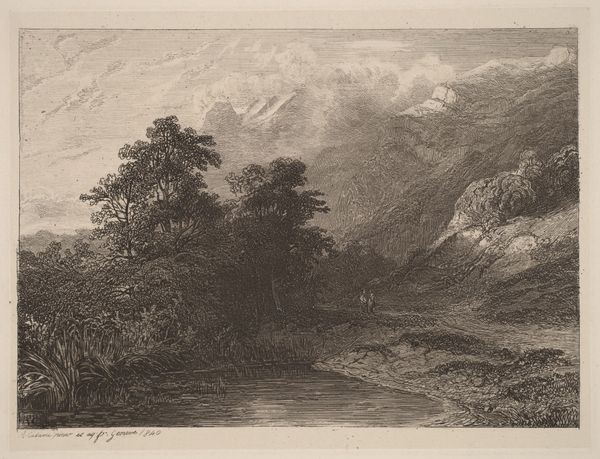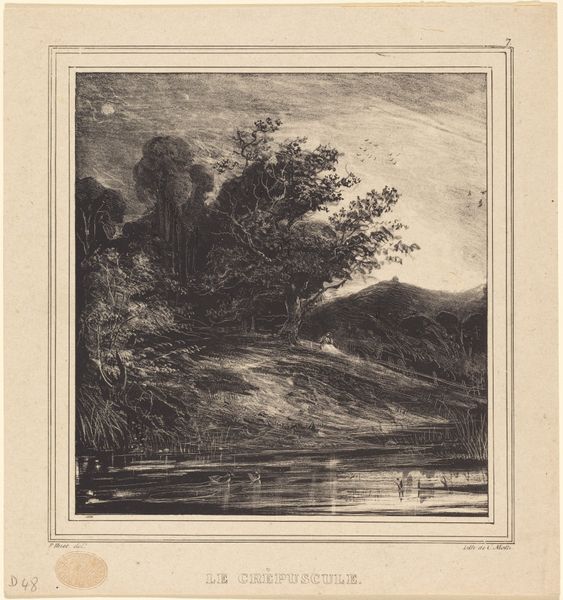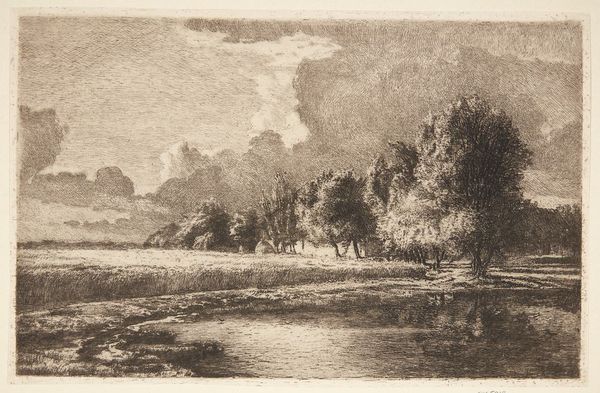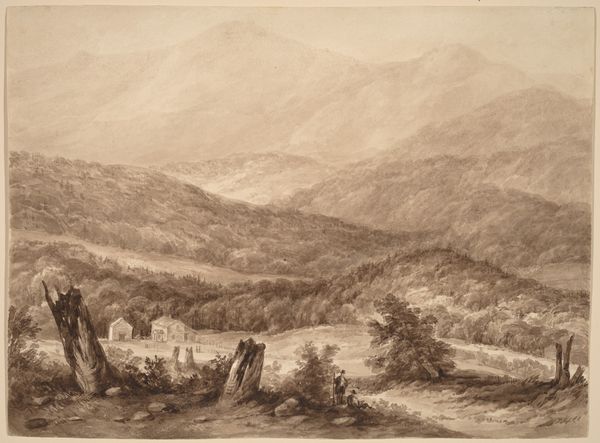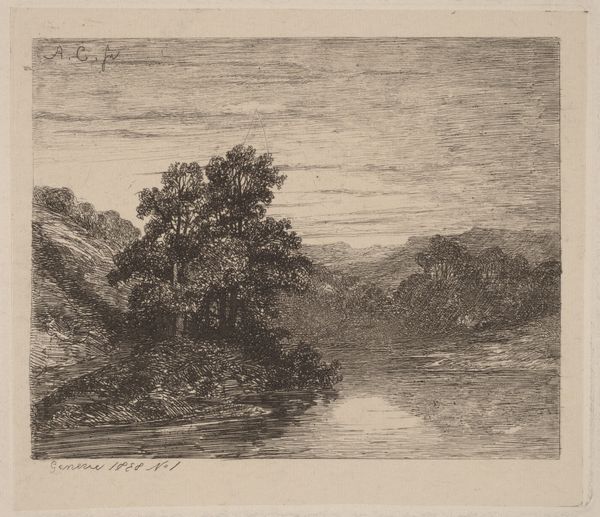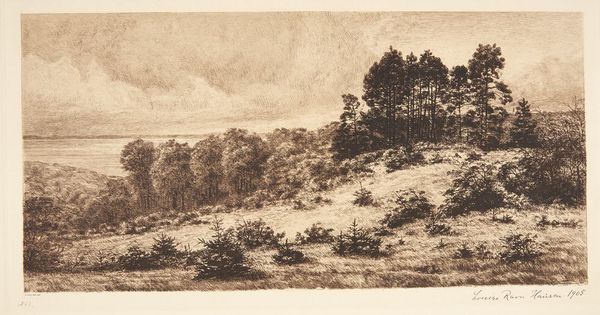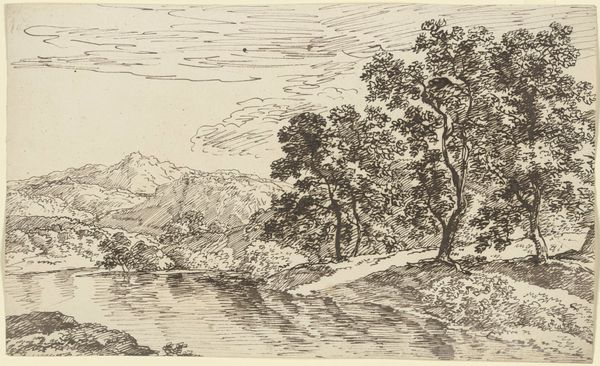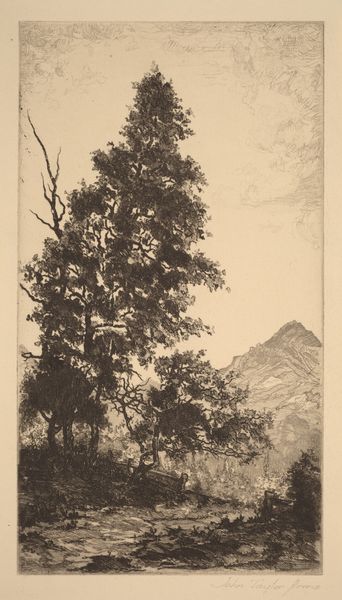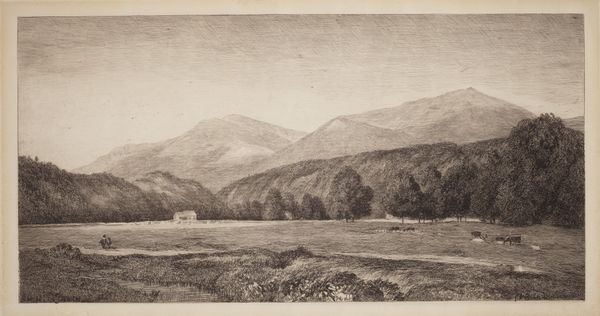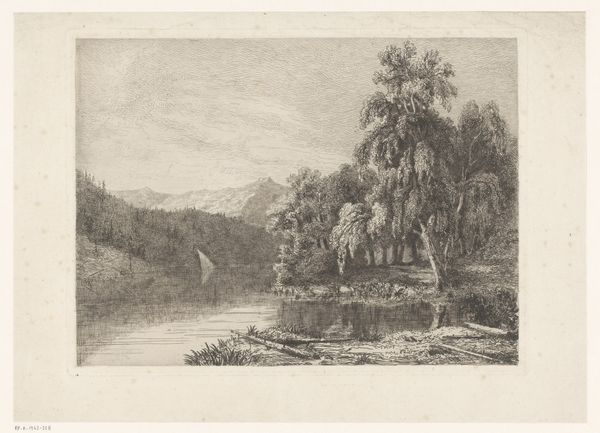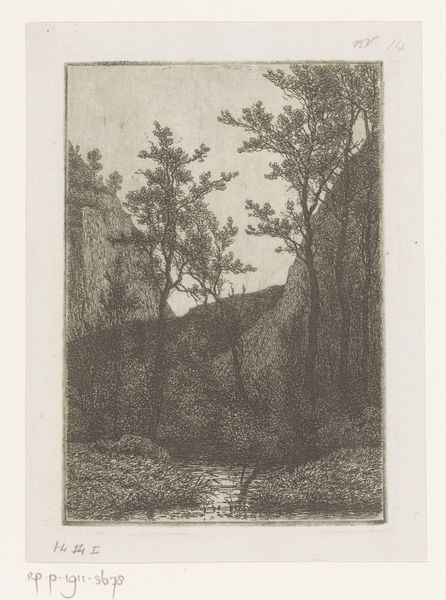
drawing, print, etching
#
drawing
# print
#
etching
#
landscape
#
romanticism
Dimensions: plate: 16.6 x 27.2 cm (6 9/16 x 10 11/16 in.) sheet: 26.6 x 35.9 cm (10 1/2 x 14 1/8 in.)
Copyright: National Gallery of Art: CC0 1.0
Editor: So, here we have Alexandre Calame's "Mountain Pond," an etching from 1845. It has a somber mood for a landscape, and a pretty classic composition. What strikes me, though, is that it seems more focused on conveying an emotion than capturing a real scene. How do you interpret this work? Curator: You’ve hit on something crucial. In its time, such Romantic landscapes served nationalistic agendas. They visually codified a specific idea of "Switzerland," focusing on its sublime, untouched nature. Consider this print's distribution. Where would images like this be circulated and displayed? And, more importantly, who would consume them, and what values were they designed to instill? Editor: So, not just a pretty picture but a way to build national identity through art? I guess it’s meant to promote a particular view, that the nation is timeless, imposing…and maybe even intimidating? Curator: Precisely! Calame wasn't merely depicting scenery; he was shaping a national narrative. These romanticized views influenced tourism, infrastructure development, and even political policies related to land preservation and access. Ask yourself who *benefits* from that vision. Editor: It is a powerful piece when you think about it like that. I now realize there’s more than initially meets the eye; art carries its historical, social and cultural implications. Curator: Absolutely. This demonstrates how art actively participates in constructing our understanding of place and belonging. Considering such pieces is crucial to critically viewing representations of landscape and nature today.
Comments
No comments
Be the first to comment and join the conversation on the ultimate creative platform.

